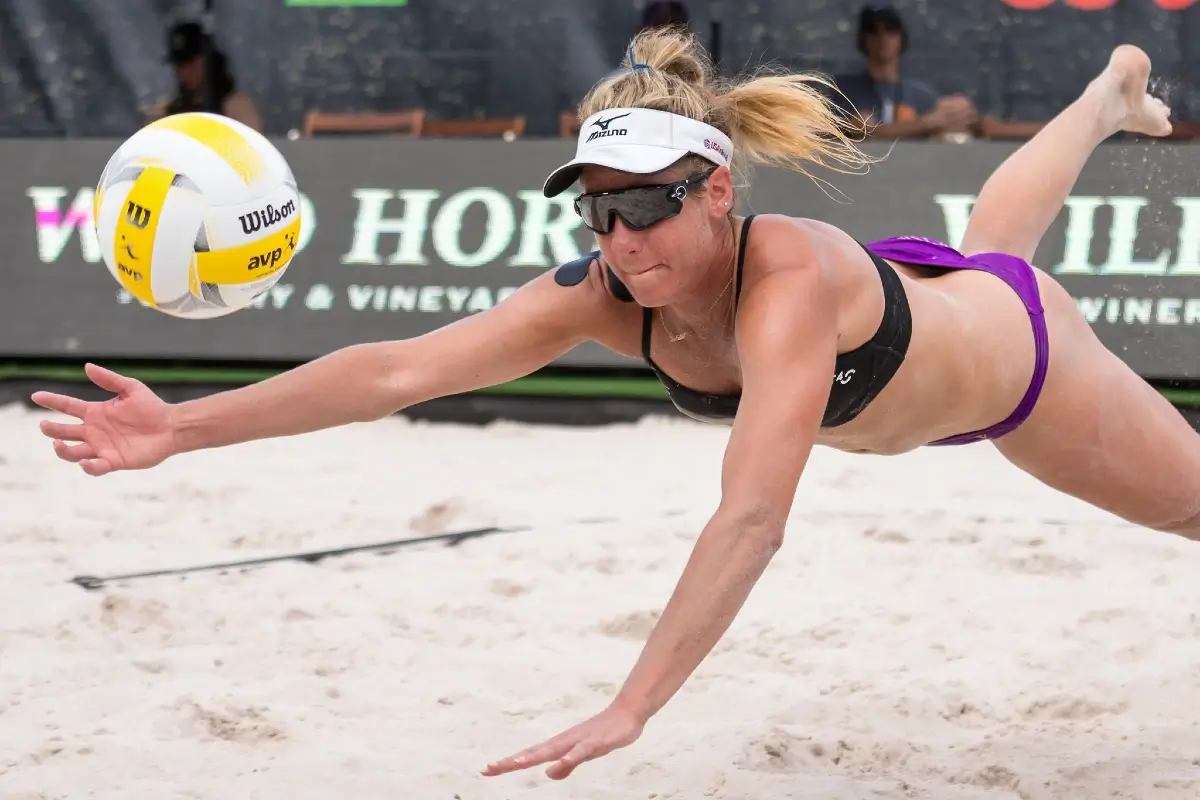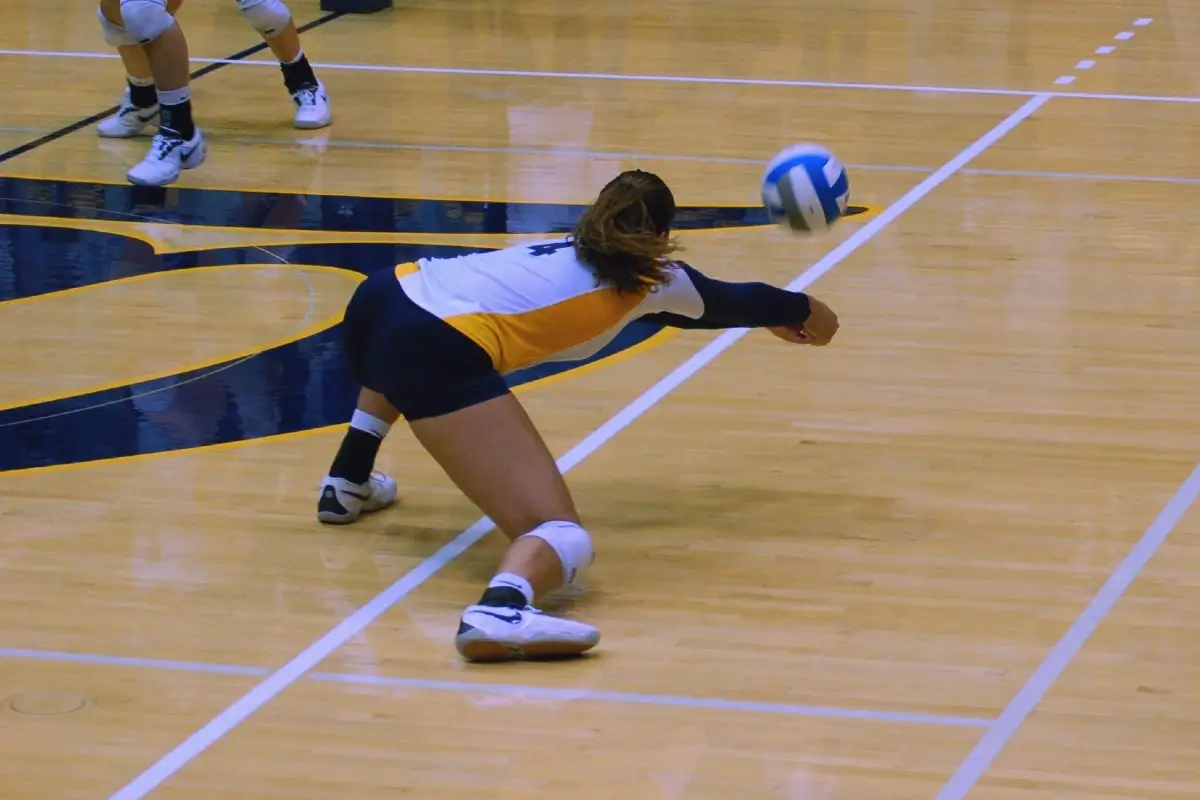Last Updated: October 27, 2023
Volleyball is hands down, one of the best sports out there. Besides heavily relying on teamwork it taps into individual brilliance as well.
Talking about individual brilliance, diving and digging are two of the most important routines you need to master in order to improve the quality of play on the volleyball court.
What is Diving?
Simply put, diving is a technique in volleyball that involves quick reaction and the player throwing themselves to the ground in horizontal motion to prevent the ball from touching the ground. Diving is important when you need to stop sudden attacks and continue the rally.
It makes for some of the best crowd-pleasing moments and also provides an essential defensive technique that can come in handy when an opponent delivers hard-driven balls.
What is Digging?
Just like diving, digging is a technique primarily meant to prevent the ball from hitting the ground. Normally, digging is performed by players stationed on the back row.
As the opponent spikes a ball over the net, the back row defense is supposed to be on hand to respond quickly by tracking the trajectory of the ball and using their forearms to prevent it from touching the ground.
Once again, the idea is to keep the ball in play and have the ball transition from defense to attack. Therefore, it is important that those digging for the ball eventually control the ball and make it playable.
Tips to Boost Your Volleyball Dives

As an important part of any successful defensive setup, diving is essential to running a successful team. Acquiring the right skills for diving makes you a strong defender and also helps protect you from potential injuries.
Footwork
To be a better diver, you need to avoid keeping your feet stationary as you make the dive. It is advisable to take 1 or 2 steps prior to taking the dive as that gives you better posture and stability – all key aspects for perfect diving.
Posture
To avoid injuring yourself, it is always best to do a deep lunge but with your knee facing directly in front. You don’t want your knee facing outwards. Then as you bend down to reach for the ball, you want to slightly move your knee inwards so most of your weight falls on your thigh.
Hand Positioning
As you drop your torso toward your knees to create a deep side lunge, you want to make sure your hands are in the correct position so that you can get hold of the ball with precision.
You want to have both hands right in front of you and directed right under the ball so you get full control of it and initiate a pass.
Also note that it is much easier to reach with one hand if the ball gets too far. But even then, you’ll still need to maintain the same posture and footwork for optimal stability.
Recommended read: Defense Dynamics: How Digging and Diving Impact the Outcome of Volleyball Matches
Once the ball is under control, get your hands safely out of the way so you don’t end up falling on them and injuring yourself. Be sure to use the palms of your hands to handle the impact once you fall onto the ground.
Torso on the Ground
To fully brace for the impact, you want your torso on the ground once your hands make contact with the ground. The idea is to have the torso land safely and softly on the court as you then get to use your hands to gently push yourself forward – essentially creating a diving motion.
Think of how penguins slide on the snow – that’s pretty much what you need to do for your torso to land safely on the court.
Tips to Boost Your Volleyball Digging Skills

Digging is the cornerstone of a strong defense in volleyball. If you are not getting your digs right, you are leaving money on the table.
Proper Posture
To start a successful dig, you want to get into a comfortable position. Make sure your feet are firmly on the ground – avoid being on your toes or heels as that will interfere with your balance and ball-handling abilities.
Always start with a nice athletic but comfortable positioning e.g., with your legs shoulder-width apart. Your knees and back should be slightly bent. Your hands in anticipation and your eyes on the ball.
Proper Hand Platform
It is extremely difficult to control the ball if your hands are poorly postured. Most importantly, you need to get the grip right and this can be achieved by creating a nice little platform.
Also read: Evaluating Your Team’s Digging and Diving Proficiency in Volleyball
With your hands open, put the back of your right hand into the palm of your left hand. You want to have both palms facing upwards but placed on one another. Then close your hands in such a manner that your thumbs are in contact with each other but on top of both fists.
Once you do this, point your hands to the ground and prepare to “dig” the ball.
Get Your Angles Right
You always want to position your arms in such a manner that they can direct the ball toward the setter. So, if the setter is on your right, you want to angle your arms platform slightly to the left.
Practice Digging to Yourself
This is a good way to improve your ball control skills. So, you’ll be basically setting the ball to yourself at different angles. For example, to set the ball right above you, one needs to get under the ball and angle the ball up.
Related: Is Your Digging Game Strong? Common Mistakes to Avoid
A key benefit of practicing digging the ball to yourself is that it enables you to also manage the movement of the ball so that the setter has an easier time preparing the attack.
Conclusion
Diving and digging are both extremely important skills to learn before hitting the volleyball court. Developing proper workout routine and learning everything from proper posture, range of motion, and mindset is important in helping you make the most of these skills and become proficient.
Like with any other technique in volleyball, it takes regular practice to achieve the desired outcomes.
